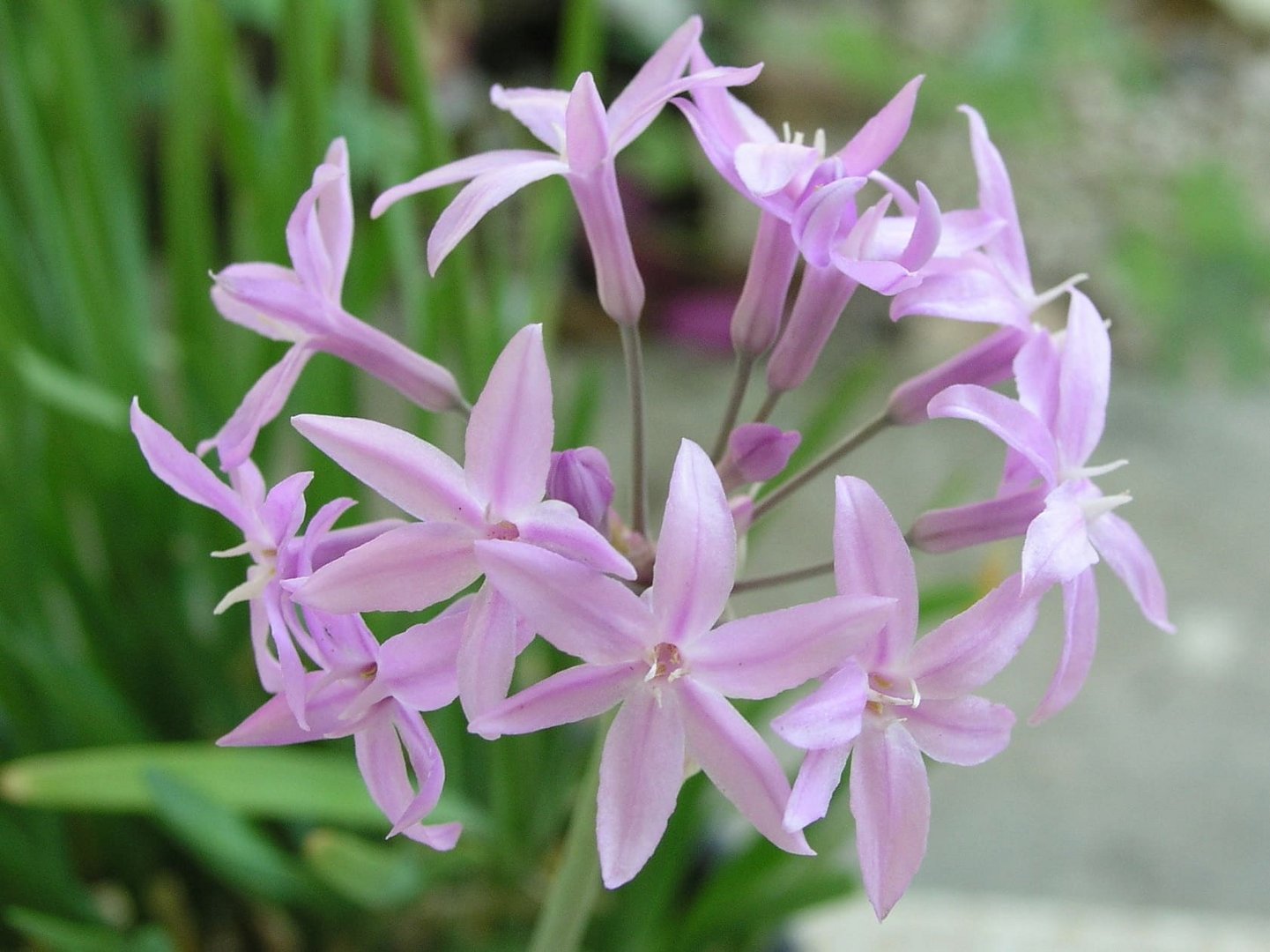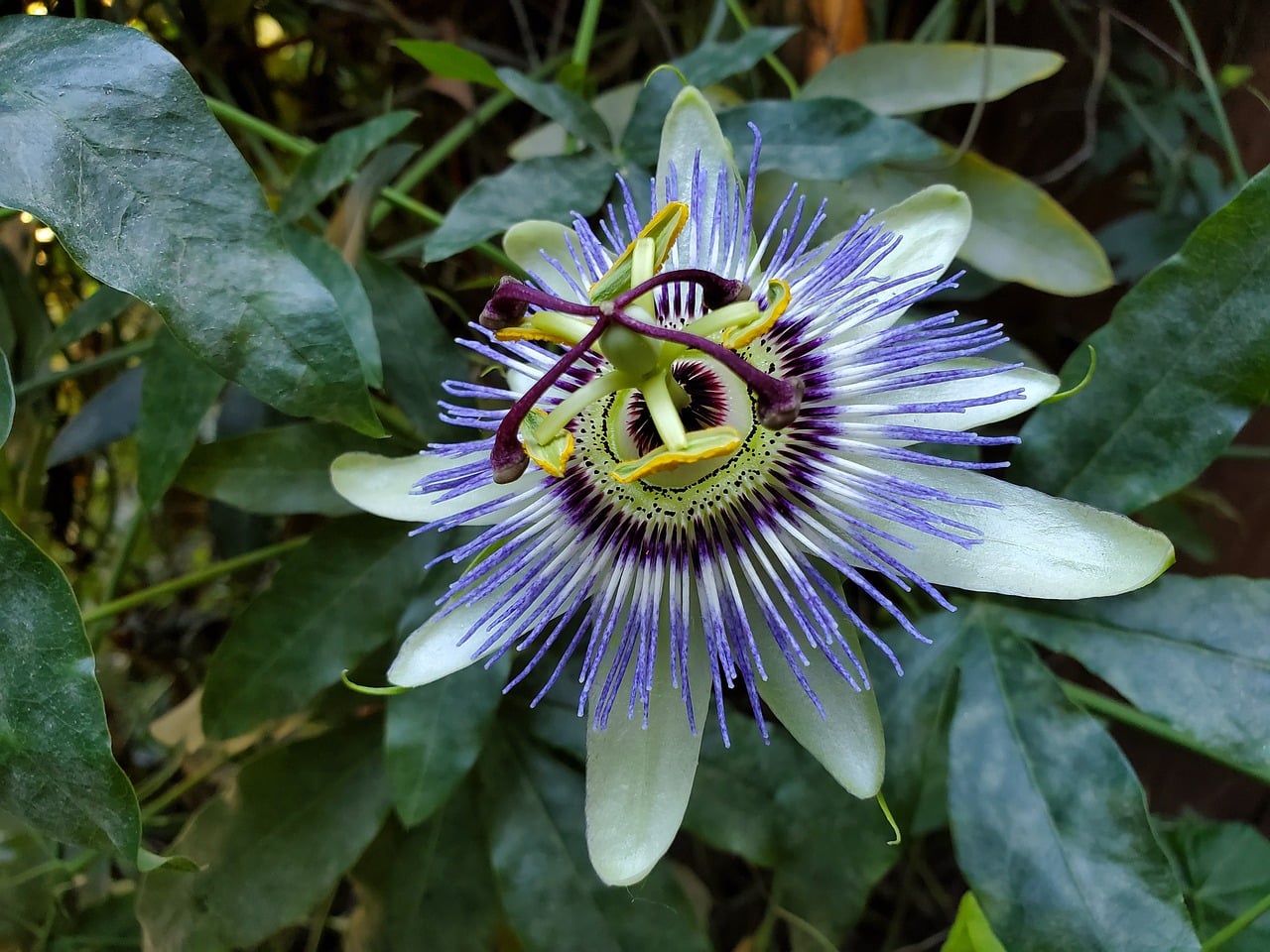By Patricia Jordan
Probably the most popular summer climber here is bougainvillea, which trails over walls, hedges and even up trees as the mass of bright-coloured papery bracts shield the tiny white flower inside. This prolific climber, which has a long-life span and can become huge eventually, grows along the coastline and up into the hills too. The top growth can be dense and will buffet about in the wind unless it is well supported. Generally, bougainvilleas tend to be almost bug-free, which is a great bonus.
In September the most talked about climber is the ‘passion flower’, which is said to contain the elements of Christ’s Passion. September 14 is Holy Cross Day and celebrated here in Stavrovouni and Omodos. If you look closely at the stunning flower heads, you will see that there are three stigmas representing the three nails that nailed Christ to the cross; five anthers for the five wounds; the corona represents the crown of thorns and the ten petals are for the Disciples (except Judas and Peter).
Campsis radicans will grow successfully up to around 300 metres elevation, and is not fussy about the soil it grows in, but does prefer a warm sunny position in the garden. In perfect conditions, it will leap up supports whether they are telephone poles or pergolas, and as a result may become too large for some gardens. The supports therefore should be substantial, or they may be toppled by the weight of the plant. Once established though the climber may succumb to frost or low night temperatures at higher levels, but will probably shoot again from the roots in the springtime.
Ipomoea purpurea, generally known as ‘morning glory’ is an attractive annual climbing plant with large three-lobed leaves, and thought to have originated in South America. Morning glory’s very impressive flowers attract pollinators such as bees, moths and other insects. Each flower lasts only one day, but the plant produces many new ones, so that its flowering season can last for several months. Removing faded flowers, (unless you want to collect the seeds of course), will activate the plant into producing more wonderful flower heads.
Mandevilleas, sometimes known as ‘Brazilian jasmines’, bloom well into the autumn. They have red, pink or white trumpet-shaped, non-perfumed flowers. The white-flowered variety, which has a touch of pink on the flower buds, has a deep-yellow throat, which is not present in the pink or red varieties. Although they like a sunny bright spot, they do need some protection from the hot sun, as their natural habitat is deep in the jungle.
A good climbing plant for those who garden in pots on verandas, Stephanotis has many common names such as ‘Madagascar jasmine’, ‘bridal veil’, ‘bridal wreath’ or ‘Hawaii wedding flower’ and was originally found growing in Madagascar. The heavily fragrant waxy, white flowers appear on new growth. These plants usually come entwined around a wire support. The long winding stems can put on 5-10 metres in a season, so that the plant does needs that support. Grown outdoors it prefers a shaded position and a little regular watering is needed, although it likes to be on the dry side during the winter, when some of the stems may wither and should be pruned off.
Pandorea jasminoides, commonly known as ‘bower of beauty’, ‘bower vine’ or ‘bower climber’ is an evergreen, vigorous woody climber, and member of the large Bignoniaceae family. Typically found in tropical and subtropical rainforests and warm temperate areas of Australia, this climber has adapted well to the climate here. It needs some humidity as it clambers up supports for the sun to enable it to flower. It will grow in most soils that are moist but well-drained and prefers full sun or part-shade. The trumpet-shaped flowers are white or pale pink and have hairy centres. They grow up to 6cm long with lobes 2 to 3cm long, and the clusters are around from late spring to summer. The flowers are followed by immature light green fruit capsules that mature into woody pods, containing numerous papery seeds. These, when split open, reveal individual elongated or circular winged seeds.

Plant of the month: Tulbaghia violacea
WHAT TO THE GARDEN THIS MONTH
September is yet another hot month here in Cyprus, depending where you live of course, with temperatures still around the mid 30s Celsius. There may be a shower or two later in the month, but nightly watering may still be necessary even after any light rain. Leave any major tasks like digging over veggie beds or trimming hedges for another few weeks. There’s still lots of time to think about the veggies you might like to try out during the coming winter.
I am sure that after the very long hot summer this year, there will be some casualties in the flower beds and pots, but wait a while and see if the cooler weather and some watering and feeding might just resuscitate any plants that are looking ‘gone over’. Pot plants may need a good pruning back and some fresh compost added now.
Pelargoniums, those great South African stalwarts, may probably need some of the stems cut back too, so trim off any straggly growth as well as dead heads and give them a liquid feed of Phostrogen to help them rejuvenate. They are the most marvellous plants and can last for years. However, sometimes the roots become congested and the stems turn woody, and you may need to take some fresh green cuttings and encourage them to root, which they should do very easily.
Garden centres, always ahead of the game, will be displaying the new intake of spring bulbs by the end of this month, which is always something to look forward to. A reminder though that bulbs will only start to grow in damp soil, so wait a while before you plant them. A general rule for planting bulbs and corms is 2-2,5 times the height of the bulb. Tulips, always later to flower, don’t go in yet, so keep them in a dry place for the moment.
Stop watering amaryllis now and let the leaves die down. Remove dead or dying foliage and flower stems of agapanthus plants, although some of them don’t lose their leaves at all. These plants have done their job for this year and now need a rest.
Think about all those jobs that you put off during the summer now. Hedges and topiaries have been growing despite the heat, so on a cooler day you might just begin to trim them back. High hedges or even walls, around a garden can create what is known as a ‘frost pocket’, which means high temperatures in the summer and very low temperatures in winter. Frost pockets can also occur if your garden is on a slope, when cold winter air flows down to the valley bottom. This is just what happens in my garden!

Pelargoniums
Plant of the Month September 2023 – Tulbaghia violacea
Perennial Tulbaghia violacea from Natal, the Transvaal and Eastern Cape areas of South Africa, thrives on rocky grasslands there, but will brighten up any dull spot in Cypriot flower borders from early summer onwards.
The first South African settlers thought tulbaghia a good alternative to eating garlic in public (which as anyone knows leaves a distinctive taste and bad breath), hence its common names of ‘society garlic’, ‘sweet garlic’ or indeed ‘pink agapanthus’, as the flowers resemble the shape of an agapanthus flower. As you might expect they both belong to the same plant family – Amaryllidaceae, together with the lovely earlier flowering plant of that name.
However, that rather dominant garlicky smell of the plant is supposed to repel insects and aphids and in some parts of the world deters moles and voles as well. Apparently, Zulus grew these plants around their home to repel snakes, so if you do have a snake problem in the summer, and there have been quite a few about, you could try some of these lovely plants.
Tulbaghias grow best in light soils in a sunny position and quickly make a large clump, which can easily be divided in early spring. They can survive for longish periods without any rain, but you will enjoy better flowering results with some occasional watering. Out of the centre of the clump long stems bearing masses of delicate pinkish flowers will appear, which smell deliciously of hyacinths in the evenings and will flower over a very long period during the summer months.
Tulbaghia can be grown in pots, but do so much better in the ground. Group them in your flower beds for best effect. They will look quite stunning!
There is only one species (violacea) available in Cyprus presently, although I have a variety called ‘cosmic’, which also grows abundantly, but does not have the charm of violacea.







Click here to change your cookie preferences